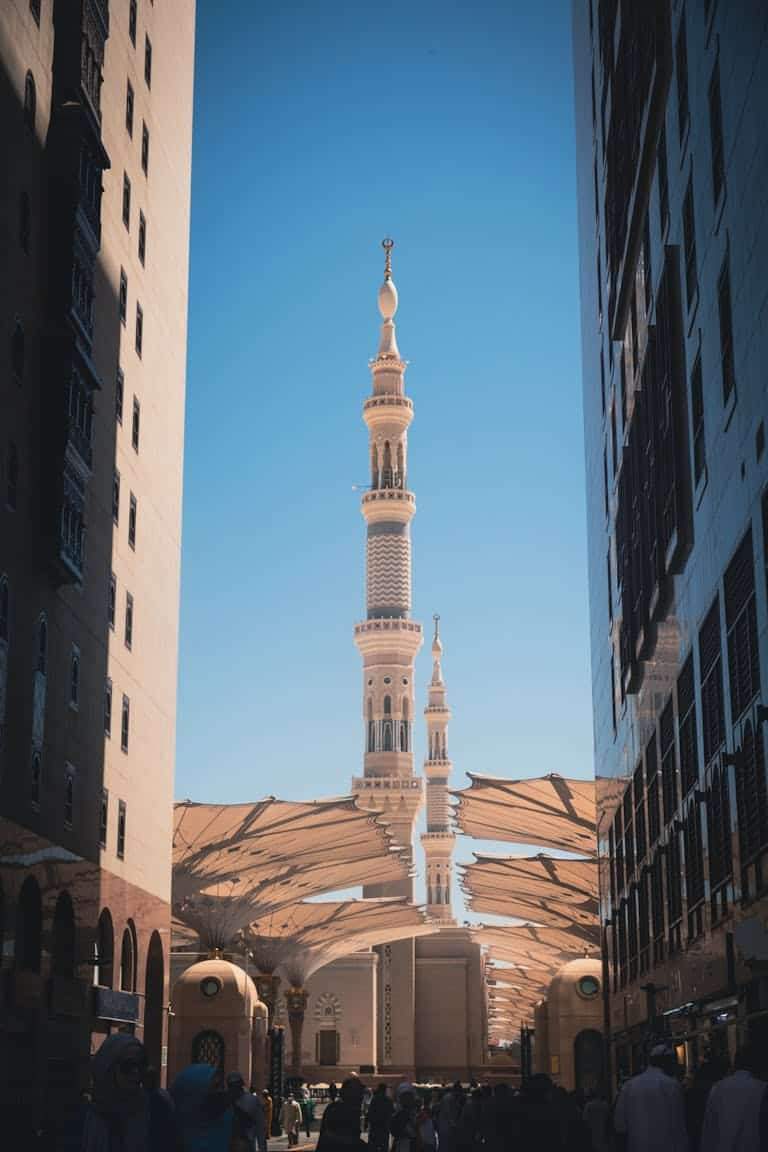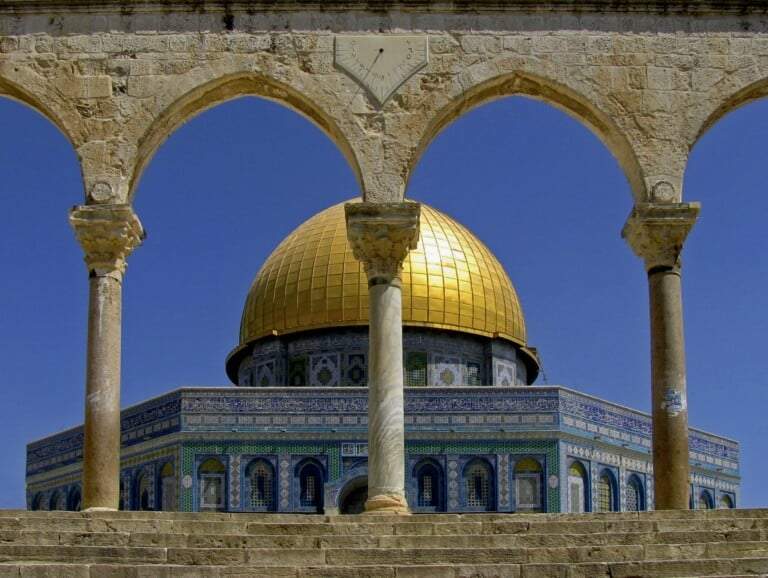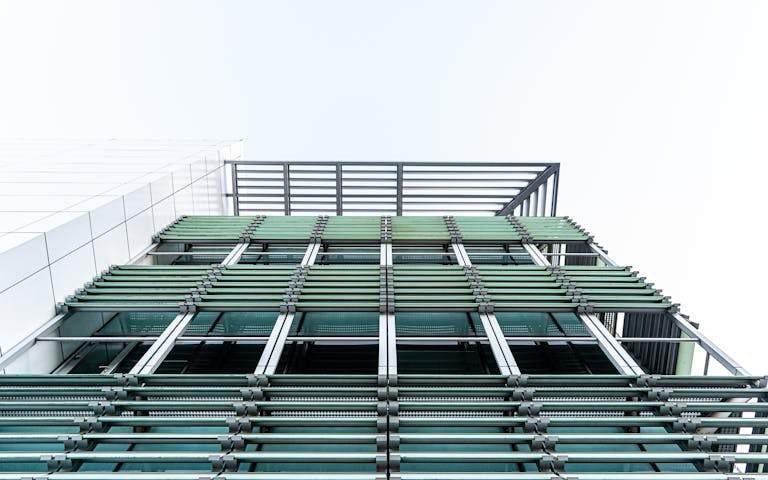Islamic Architecture Meets Modern Design: A Sustainable Future
Explore the confluence of traditional Islamic architecture and modern design principles. Discover how the rich heritage of Islamic architecture is inspiring sustainable, innovative designs in today’s urban landscape, and how it holds the key to a more harmonious, environmentally-friendly future. Delve into real-world projects where ancient Islamic architectural wisdom meets cutting-edge technology and contemporary design methodologies, forging a path towards a more sustainable, aesthetically pleasing, and culturally rich architectural landscape
Islamic Architecture and 3D-Printed Architecture: A Fusion of Tradition and Innovation
The realm of architecture is witnessing an exhilarating blend of tradition and modernity as the age-old Islamic architectural principles intertwine with cutting-edge 3D printing technology. This amalgamation not only respects the rich heritage encapsulated in Islamic architecture but also embraces the efficiency, precision, and sustainability offered by 3D printing technology.
One of the hallmark projects underlining this convergence is the initiative by Dubai’s Islamic Affairs and Charitable Activities Department (IACAD) to construct the world’s first 3D-printed mosque. Situated in Bur Dubai, this ambitious project encapsulates a 2,000-square-metre area, set to welcome up to 600 worshippers upon its completion in 2025. Although the initial cost is projected to be 30% higher due to the novelty of the technology, it is anticipated that expenses will equalize in the near future, making it a viable model for similar ventures. This initiative is part of a broader ‘Dubai 3D Printing Strategy’, aiming to position Dubai as a leading hub for 3D printing technology by 2030 and to ensure that 25% of every new building will be constructed using 3D printing technology by the same year1.
Furthermore, a remarkable venture has been undertaken to modernize the design and fabrication process of Islamic ceramic tiles, integrating computer-aided design (CAD) with traditional ceramic production techniques. Utilizing ArtCAM 2015R2 software, images embodying Islamic themes were transformed into 2.5D computer-aided design models. The subsequent phase employed an Objet30 Pro 3D printer to meticulously craft master molds adorned with Islamic nuances such as puzzle and floral patterns. This harmonization of digital design and rapid prototyping technologies with conventional ceramic fabrication led to the production of exquisite Islamic decorative ceramic wall tiles with a remarkable reduction in design-to-production time from 10-12 months to roughly 1-1.5 months
These endeavors are a testament to the vast potential lying at the crossroads of Islamic architecture and 3D printing technology. The meticulous geometries and intricate patterns emblematic of Islamic architecture can be faithfully replicated and even reimagined through the lens of 3D printing technology. Moreover, this fusion paves the way for the exploration of novel design realms, potentially unveiling a new era of architectural innovation that is deeply rooted in cultural heritage yet forward-looking in its approach.
Islamic Architecture and Tiny Homes: A Synthesis of Tradition and Minimalism
The aesthetic and philosophical underpinnings of Islamic architecture resonate profoundly with the burgeoning movement of tiny homes. At the core, both domains champion the essence of minimalism, sustainability, and efficient utilization of space.
Islamic architecture, with its emphasis on functionality, modesty, and environmental harmony, provides a fertile ground for exploring innovative design solutions in the realm of tiny homes. The timeless principles of Islamic architecture such as courtyards for natural ventilation, Mashrabiya for privacy and shading, and the effective utilization of vertical space can be seamlessly integrated into the design ethos of tiny homes. This integration not only fosters a sense of cultural continuity but also addresses the modern-day challenges of space and resource constraints.
The essence of compact living in tiny homes finds a parallel in traditional Islamic dwellings which often exemplify an intelligent use of space, fostering community interaction while preserving privacy. The design ingenuity inherent in Islamic architecture can inspire modern tiny home designs to be both aesthetically pleasing and functionally efficient, thus contributing to the wider acceptance and proliferation of tiny homes in diverse societal settings.
Furthermore, the Islamic tradition of simple living and contentment can offer a philosophical foundation to the tiny homes movement, encouraging a lifestyle that is less encumbered by material possessions and more focused on community, spirituality, and the natural environment. This alignment of values not only enhances the livability and appeal of tiny homes but also enriches the discourse on sustainable and mindful living in the contemporary architectural landscape.
The intersection of Islamic architecture and the tiny homes movement opens up a dialogue between the past and the present, offering a lens through which modern society can revisit the age-old wisdom embedded in Islamic architectural traditions while navigating the complexities of contemporary living spaces.
INJ Architects Studio designs Al Fulk Mosque with a different frame in Preston, UK
Islamic Architecture and Biophilic Architecture: An Intersection of Natural Harmony
Fresh Architectural Perspective on Islamic Architecture:
Islamic architecture is not merely a representation of historical and traditional designs, but a profound embodiment of certain principles and values. Its essence lies in the harmonious balance between form and function, the aesthetic and the utilitarian. It reflects a deep understanding of the spatial, environmental, and social contexts within which it evolves. The careful articulation of light, space, and material in Islamic architecture speaks to a holistic design approach that aims to elevate the human experience.
In the contemporary architectural discourse, Islamic architecture can serve as a rich source of inspiration. Its meticulous geometric patterns, intricate calligraphy, and clever use of light and shadow can provide a unique aesthetic vocabulary. Moreover, the principles of sustainability, community, and privacy ingrained in Islamic architectural traditions are highly relevant to modern architectural challenges.
The thoughtful organization of spaces in Islamic architecture, the prioritization of communal areas, and the incorporation of natural elements like courtyards and gardens, present a compelling model for modern urban design. It proposes a way of creating more humane, sustainable, and culturally resonant built environments.
Moreover, in a world increasingly characterized by the homogenization of architectural styles, Islamic architecture stands as a testament to the rich diversity and cultural specificity that is possible within the architectural realm. It invites a re-exploration of local materials, traditional building techniques, and indigenous design solutions, promoting a more pluralistic and contextually grounded architectural practice.
This fresh perspective on Islamic architecture encourages a deeper engagement with the cultural, historical, and environmental contexts, fostering a more nuanced and enriched architectural dialogue. Through a modern lens, the age-old wisdom encapsulated in Islamic architectural traditions can offer a pathway toward a more meaningful and responsive architectural practice.
Implications for Islamic Architecture in the Current Scenario:
In the rapidly evolving architectural landscape, Islamic architecture holds a pivotal position as a conduit for intercultural dialogue and sustainable design solutions. The unique amalgamation of historical wisdom, aesthetic richness, and environmental consciousness inherent in Islamic architecture provides a rich tapestry of ideas that can be harnessed to address contemporary architectural challenges.
- Cultural Continuity and Dialogue: In an increasingly globalized world, Islamic architecture stands as a beacon of cultural identity and heritage. It fosters a sense of continuity and offers a platform for intercultural dialogue, bridging the gap between past and present, tradition and modernity.
- Sustainable Design Practices: The traditional principles of Islamic architecture, such as natural ventilation, passive cooling, and the use of local materials, resonate strongly with the global shift towards sustainable and eco-friendly design practices.
- Technological Innovation: The advent of new technologies like 3D printing and digital fabrication opens up exciting avenues for reinterpreting and revitalizing Islamic architectural motifs and design principles.
- Holistic Design Approach: Islamic architecture’s holistic approach to design, which encompasses the social, environmental, and spiritual dimensions, provides a well-rounded framework that can inspire modern architectural practices to create more human-centric and meaningful built environments.
- Community and Social Harmony: The emphasis on community spaces, privacy, and social interaction in Islamic architecture holds valuable lessons for modern urban design, especially in the face of rising urbanization and the erosion of communal ties.
- Educational Value: The rich history and diverse manifestations of Islamic architecture offer a vast educational resource for architects, designers, and scholars. It provides a lens through which to explore the complex interplay between culture, environment, and design.
The exploration of these implications not only sheds light on the enduring relevance of Islamic architecture but also underscores its potential to contribute significantly to the broader architectural discourse. By engaging with the principles and aesthetics of Islamic architecture, modern practitioners can unlock new design possibilities and foster a more inclusive, sustainable, and culturally resonant architectural narrative.
This article will delve into the heart of Islamic architectural traditions, showcasing their enduring relevance and potential to significantly contribute to modern architectural discourse. From the interplay with 3D printing technology to the resonance with the tiny homes and biophilic design movements, this exploration sheds light on how the age-old wisdom encapsulated in Islamic architectural traditions can offer a pathway towards a more meaningful, sustainable, and human-centric architectural practice.
sustainable design meets vernacular chinese tradition in the well house







